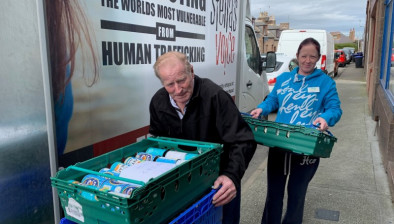Price per square metre of Scottish homes unveiled in new report
 The amount of space house buyers get for their money in different parts of the country has been considered in a new report from the Bank of Scotland.
The amount of space house buyers get for their money in different parts of the country has been considered in a new report from the Bank of Scotland.
Instead of defining homes by the numbers of rooms, the study measures property by the price per square metre.
According to the report, West and Central Scotland have seen the biggest increase in house price per m2 in Scotland over the last five years but traditional housing hotspots in the East remain the most expensive.
Larkhall and Lanark both saw the largest house price growth per m2 over the last five years at 33% to an average price of £1,163 and £1,184 respectively, closely followed by Dalkeith, Bathgate and Hamilton (all 32%).
In Scotland, house prices per m2 have risen by 20% since 2013 from an average of £1,320 to £1,579 in 2018. Greater London has experienced substantially faster growth than elsewhere in Great Britain over the same period, with an average increase of 52%.
Unsurprisingly, Edinburgh is Scotland’s most expensive town at £2,669 per m2. Linlithgow in West Lothian (£2,076 per m2) is the second most expensive town, followed by Stonehaven in Aberdeenshire (£2,039 per m2).
Grangemouth in Stirlingshire is the least expensive town in Scotland with an average price of £1,016 per m², followed by Bellshill in North Lanarkshire (£1,030 per m2).
Graham Blair, mortgages director, Bank of Scotland, said: “It can be useful when comparing house prices to use a measure such as house price per square metre as it reflects differences in size and type of properties in different locations.
“Towns in the East and the North are more expensive than West and Central areas. However, several towns in the West have seen significant increases in the last five years. Despite this, a clear gap has formed between England, particularly London, and Scotland, Ireland and Wales over the last 20 years.”
Of the top 10 most expensive towns in Scotland per m2, six are in Edinburgh and the Lothians with the remaining four in Aberdeenshire. Whilst it is no surprise that these financial and industrial hubs dominate the house price per m2 charts, the difference in price per m2 between Broxburn in West Lothian (one of the top 10 most expensive towns in Scotland), and Grangemouth in Stirlingshire (the least expensive town in Scotland) is only £653 per m2.
Whilst this is a fair amount of cash, it shows that Scotland’s housing market is less polarised than south of the border, with the difference between Lambeth (one of the top 10 most expensive towns in England), and Nelson (the least expensive town in England) a massive £5,465.
Eight of the 10 towns with the lowest prices per m2 are in either central or western Scotland. In addition to Grangemouth (£1,016) and Bellshill (£1,030), these include Irvine (£1,090), Larkhall (£1,163), Coatbridge (£1,147) and Wishaw (£1,159), all in Central Scotland, along with Greenock (£1,090) and Dumfries (£1,124) in the West of Scotland. The two towns with the lowest house prices on a per m2 basis are Lochgelly (£1,100) and Glenrothes (£1,167), both in Fife in the East of Scotland.
The East of Scotland has seen the biggest house price per m2 increases in Scotland over the last 20 years. Edinburgh grew the most at 207%, followed by Stonehaven (200%) and the two Highland towns of Inverness (179%) and Elgin (177%) also saw substantial increases over the last two decades. Edinburgh is the only town in Scotland to have an average house price per m2 above the British average of £2,342.
The average price per m2 across Scotland has increased by 148% over the past 20 years from £637 in 1998 to £1,579 in 2018. This is the lowest increase of any area of Great Britain, with Greater London experiencing price hikes of 301% and Wales seeing an increase of 180%. The average increase across Great Britain since 1998 is 215%.








